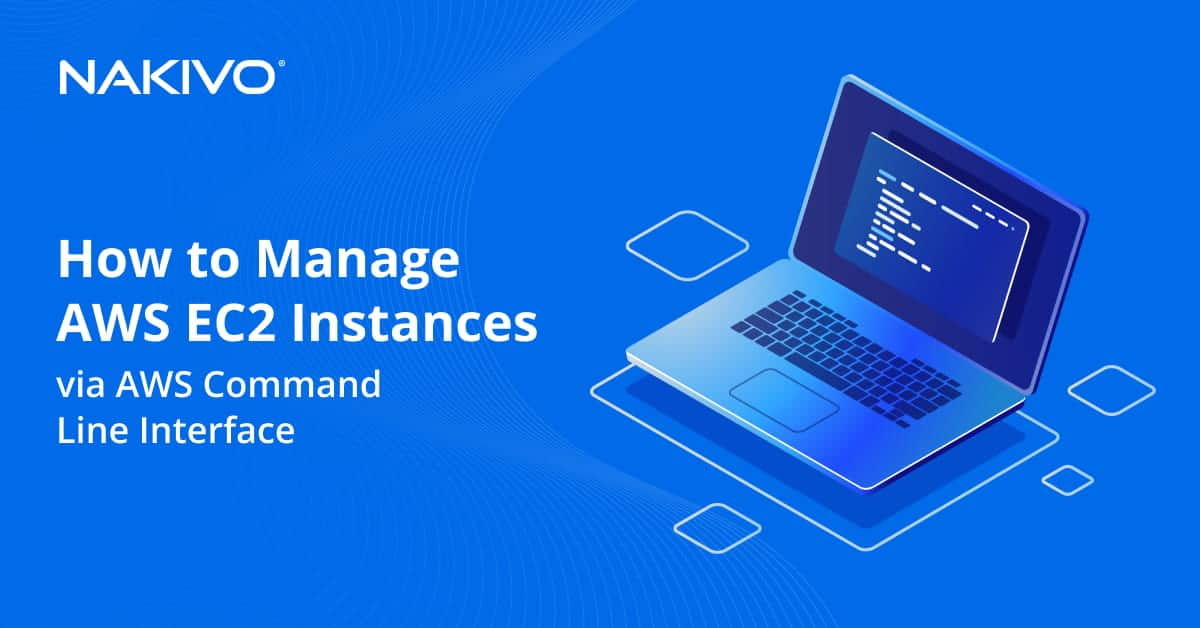Windows Server 2016 Essentials vs Standard: How They Compare
The year 2016 welcomed the release of Windows Server 2016. The new server functionality was designed for seamless cloud integration and simplified management across hybrid cloud environments. There are three editions of Windows Server 2016: Essentials, Standard, and Datacenter. This blog post provides a detailed comparison of Windows Server 2016 Essentials vs Standard, which can help you determine which Windows Server 2016 edition works best for your environment. In addition, we discuss how NAKIVO Backup & Replication’s Windows Server Backup can protect Windows Server machines in a simple and efficient manner.
Windows Server 2016: Short Overview
In a nutshell, apart from comparing Windows Server 2016 Essentials vs Standard editions, this blog post also answers the following questions:
What is Windows Server 2016? – Windows Server 2016 is a Microsoft operating system, which became generally available on October 12, 2016. Built primarily for cloud computing users , Windows Server 2016 simplifies the transition of on-premises workloads to the cloud. With its advanced server functionality, you can easily adapt to changing business requirements and build a high-performance, secure, flexible, and affordable production environment.
What editions are available in Windows Server 2016? – There are three primary editions of Windows Server 2016 which differ in a number of ways:
- Datacenter Edition
- Standard Edition
- Essentials Edition
How has licensing changed? – Windows Server 2016 has adopted core-based licensing instead of processors-based licensing. This way, you can:
- License all physical cores in the server
- License each physical server with a minimum of 16 physical cores
- License each physical processor with a minimum of 8 physical cores
- Get access to 2-pack core licenses
The adoption of core-based licensing has introduced a more consistent and unified approach to licensing across environments, allowing support for mixed environments.
What are the new features in Windows Server 2016? – Apart from the core Windows Server functionality, Windows Server 2016 includes the following new and upgraded features:
- Nano Server
- Windows Server containers
- Active Directory Domain Services
- Active Directory Federation Services (ADFS)
- Hyper-V containers/Operating System Environments (OSEs)
- Windows Defender
- Storage Spaces Direct
- Storage Replica
- PowerShell 5.0
- Shielded Virtual Machines
What are the basic requirements for Windows Server 2016 installation?
The following table showcases the minimum hardware requirements for installing Windows Server 2016, which are equally applicable to all Windows Server 2016 editions:
| Processor | 1.4Ghz 64-bit processor |
| RAM | 512 MB (for Windows Server 2016 in Server Core mode)
2 GB (for Windows Server 2016 in a GUI mode) |
| Disk space | 32 GB |
| Network adapter | 10/100/1000 Gigabit Ethernet Adapter |
| Optical storage | DVD drive (when installing the OS from DVD media) |
| Graphics hardware | Super VGA (1024 x 768) or higher resolution |
To identify whether your CPU complies with all of the listed requirements, you can download the Coreinfo tool.
Windows Server 2016 Essentials vs Standard: Full Comparison
Here, we are going to compare Windows Server 2016 Essentials vs Standard and see how they differ in their features.
Windows Server 2016 Standard is a full-featured server OS which can be deployed by small or medium-sized organizations to provision physical or minimally virtualized server environments. Windows Server Standard can function as a platform for some server applications such as Exchange Server or SQL Server, which should be purchased separately.
Windows Server 2016 Essentials was previously referred to as a Small Business Server, revealing its main purpose – serving small businesses. Windows Server 2016 Essentials is ideal for small businesses running low production workloads as this edition can serve only up to 25 users and 50 devices. It can be deployed as a first server (for inexperienced users) or a primary server (for building a multi-server environment to be used by SMBs). Windows Server 2016 Essentials delivers a set of advanced features and capabilities to small businesses for a reasonable price, allowing them to achieve more productivity and efficiency. When talking about Windows Server 2016 Essentials, it is worth mentioning that no CAL is required, meaning that you don’t have to worry about complex licensing requirements and the high costs that CAL entails.
Look at the table below to see how Windows Server 2016 Essentials vs Standard compare.
| Windows Server 2016 Essentials | Windows Server 2016 Standard | |
| Virtualization rights | Zero, 1 physical or 1 virtual installation | 2 Operating System Environments (OSEs) or 2 Hyper-V Containers |
| Licensing | CPU-based | Core-based |
| CALs | CALs not required (up to 25 users and 50 devices)
Note that an RDS CAL is required if you want to enable Remote Desktop Services |
CALs required for every user or device which has a direct/indirect connection to a Windows server |
| RAM limit | 64 GB | 24 TB |
| CPU limit | Maximum 2 CPUs | 512 Cores |
| Pricing | $501
Note that actual customer prices may vary |
$882
Note that actual customer prices may vary |
Additionally, the Windows Server 2016 Essentials vs Standard editions offer different server roles, as can be seen in the table below.
| Server role | Windows Server 2016 Essentials | Windows Server 2016 Standard |
| Active Directory Services | +
Automatically installed |
+ |
| Active Directory Domain Services | +
Automatically installed |
+ |
| Fax Server | +
Automatically installed |
+ |
| Remote Access | +
Automatically installed |
+ |
| Network Policy & Access Services | +
Automatically installed |
+ |
| Web Server (IIS) | +
Automatically installed |
+ |
| Active Directory Federation Services | + | + |
| Active Directory Lightweight Directory Services | + | + |
| Active Directory Rights Management Services | + | + |
| Application Server | + | + |
| DHCP Server | + | + |
| DNS Server | + | + |
| Files Services | + | + |
| Hyper-V | – | + |
| Print & Document Services | + | + |
| Remote Desktop Services | – | + |
| UDDI Services | + | + |
| Windows Deployment Services | + | + |
| Windows Server Update Services | – | + |
Note that certain server roles are automatically installed in Windows Server 2016 Essentials. Such server roles should be manually configured in the Windows Server 2016 Standard and Datacenter editions. Apart from that, there might be compatibility issues with certain applications in Windows Server 2016 Essentials (Hyper-V, Data Deduplication, Failover Clustering, and Windows Server Update Services) simply because the required server roles are not included in this edition.
How to Perform Windows Server Backup with NAKIVO Backup & Replication
NAKIVO Backup & Replication is a fast, reliable, and affordable data protection solution designed to deliver backup, replication, instant granular restoration, and site recovery in a single product. With the Windows Server Backup functionality, you can ensure robust data protection of not only virtual and cloud workloads, but also physical servers.
NAKIVO Backup & Replication allows you to create image-based, incremental, and application-aware backups of Windows Server physical machines. This way, the product can capture the entire VM data while ensuring consistency of the application and database data (Microsoft Exchange, SQL, Active Directory, SharePoint, Oracle, etc.). Moreover, NAKIVO Backup & Replication provides a set of advanced features which can boost VM backup performance, reduce backup size, ensure instant and reliable recovery, and lower management overhead, as well as save you time and money.
To perform Windows Server Backup with NAKIVO Backup & Replication, you should do the following:
1. Click Create and select the Physical server backup job option in the drop-down menu.
2. The next step is to select which type of physical servers you wish to protect. Click Next.
3. At the Destination step, you can select a backup repository to which all the back up data should be sent. Click Next.
4. Based on your business needs, NAKIVO Backup & Replication allows you to add multiple schedules to a single Windows Server backup job. Backup jobs can be set to run on a daily/weekly/monthly/yearly basis. Another option is to check the box Do not schedule, run on demand, meaning that the job can be started manually without following any schedule.
5. At the Retention step, you can specify how many recovery points should be kept in the backup repository and for which period of time. Click Next.
6. Lastly, you can configure job options to achieve better backup performance. Here, you can edit the job’s name; enable the application-aware mode, change tracking, network acceleration, and encryption; set up pre and post job actions; create a bandwidth throttling rule for this job. Click Finish or Finish & Run once you have completed the job creation.
Conclusion
When developing Windows Server 2016, the Microsoft team worked in close collaboration with the System Center and Azure Cloud teams. The main reasoning behind such collaboration was to create an interconnected ecosystem which can easily deliver Microsoft services across hybrid cloud environments. Therefore, Windows Server 2016 is an extremely important addition to the Windows NT family of operating systems due to the enhanced capabilities it offers.
This blog post has attempted to compare Windows Server 2016 Essentials vs Standard. As you can see, the main difference between the two editions is the variety of the respective functionalities. Windows Server 2016 Essentials works best for small organizations with minimal IT requirements, whereas Windows Server 2016 Standard is more appropriate for companies with non-virtualized environments which require advanced capabilities of the Windows Server functionality.
Request a live demo by one of our engineers to test NAKIVO Backup & Replication in your production environment today and see for yourself the multiple benefits that it provides, including its advanced Windows Server Backup functionality.










